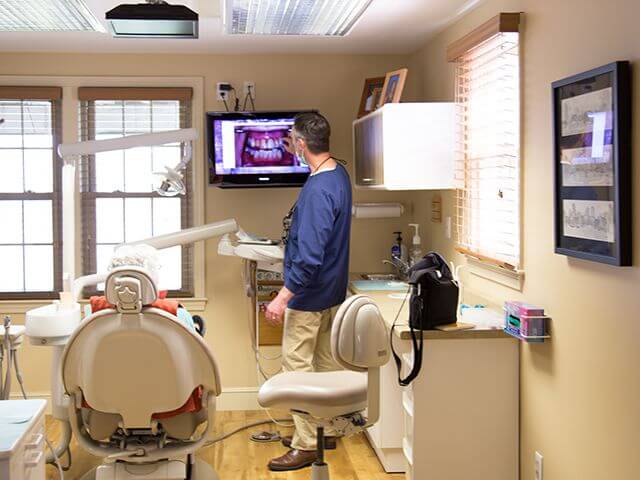21 SUGGESTIONS FOR SUCCESS
December 31, 2018
Thanks again to the The Town Common for another great year. At the end of each of the past 13 years, I have used this space to publish these 21 Suggestions for Success authored by H. Jackson Brown, Jr. It is the perfect time to reflect on the year past and prepare for any changes we need to make for the year to come.
How was 2018 for you? While reflecting on the past year is important, thinking forward to the year to come is even more important. The past is in the past.
Cut this out and put it on the refrigerator. Read this list often and take these suggestions to heart. They will be sure to make your 2019 great.
- Marry the right person. This one decision will determine 90% of your happiness or misery.
- Work at something you enjoy and that’s worthy of your time and talent.
- Give people more than they expect and do it cheerfully.
- Become the most positive and enthusiastic person you know.
- Be forgiving of yourself and others.
- Be generous.
- Have a grateful heart.
- Persistence, persistence, persistence.
- Discipline yourself to save money on even the most modest salary.
- Treat everyone you meet like you want to be treated.
- Commit yourself to constant improvement.
- Commit yourself to quality.
- Understand that happiness is not based on possessions, power or prestige, but on relationships with people you love and respect.
- Be loyal.
- Be honest.
- Be a self-starter.
- Be decisive even if it means you’ll sometimes be wrong.
- Stop blaming others if it means you’ll sometimes be wrong.
- Be loyal and courageous. When you look back on your life, you’ll regret the things you didn’t do more than the ones you did.
- Take good care of those you love.
- Don’t do anything that wouldn’t make your Mom proud.
Best wishes for a successful 2019. Happy New Year!

Dr. St. Clair maintains a private dental practice in Rowley and Newburyport dedicated to health-centered family dentistry. If there are certain topics you would like to see written about or questions you have please email them to him at jpstclair@stclairdmd.com. You can view all previously written columns at www.jpeterstclairdentistry.com/blog.
FREAK OF NATURE
December 25, 2018

I recently attended a dental continuing education course entitled “Hit Man or Healer?” The course was given by a well-known leader in the dental profession. The basic premise of the course was the notion that we have a lot more science, studies, and data available today to be able to make better decisions about the treatment that we dentists recommend to patients. The concept is called evidence-based dentistry.
The idea is that if a very structured examination and diagnosis is done, treatment recommendations can be made based on science. The problem is, many times the diagnosis leads to suggestions that without the proper dialogue can make the dentist look like a “hit man” (ie. patient perception of over-treatment) vs. “healer” (intervention with the intention to preserve the teeth better for the long-term).
The lecturer started by putting an image of a person’s teeth on the screen and asking the audience to guess how old the person was. Although it is relatively easy to estimate a person’s age during transition from the primary teeth to permanent teeth, it is apparently a little more difficult when all the permanent teeth are in. I guessed the age of the patient on the screen to be between 50 and 60.
The patient had great looking teeth. You could tell the person was a mature adult by the darkening of the teeth, but there was very little wear and very minimal dentistry. The patient ended up being 94 years old. The lecturer displayed the woman’s full face on the screen and said, “Is this the way teeth should look at 94 or is this woman a freak of nature?”
While there are definitely genetic factors that play a role, many of the problems we see today with teeth are 100% preventable. Take decay for example; decay is 100% preventable. However, it is still not uncommon today to have a patient (typically a teenager) come in for a routine dental hygiene appointment and be told they have decay, or multiple areas of decay, which were not present 6 months ago. In that scenario the dentist would be considered the “hit man”.
The “healer” may have taken a different approach and may have done a more thorough evidence-based evaluation and made recommendations based on diet, homecare habits and maybe even familial history that may have prevented the decay in the first place. Dentists have gotten good at telling patients how they can “fix” the problem, but need to consider changing their thinking and get more training in how to “prevent” the problems we see today in dentistry.
There are very few things I learned in dental school that I still use today. Many of the basic principles are used but there is continuous new data emerging that we as health care providers need to expose ourselves to, and decide on what and how to implement for the benefit of our patients. I hope to see major advancements in our approach to oral health care in my career. There is no reason you can’t live to 94 and have a great set of teeth.
Dr. St. Clair maintains a private dental practice in Rowley and Newburyport dedicated to health-centered family dentistry. If there are certain topics you would like to see written about or questions you have please email them to him at jpstclair@stclairdmd.com. You can view all previously written columns at www.jpeterstclairdentistry.com/blog.
OUTSIDE THE BOX
December 17, 2018

Dentistry is one of those things in life….as with most things…. that people view in different ways. Some are interested in their appearance, some are interested in their health, some both,and others none of the above. A major role of health care providers is to make patients aware of the possibilities to improve their quality of life. When our services are perceived as a commodity, expectations are often not achieved.
Dentists play a key role in screening patients for many disorders relative to nutrition and in providing appropriate referrals into the health care system. Although the importance of integrating diet and nutrition guidance into dental care has been advocated for decades by educators, it continues to be ignored except by a handful of prevention-oriented practitioners.
Many of the world’s most significant health problems are linked to poor dietary practices, including over-nutrition and under-nutrition. Nutrition plays a fundamental role in health, and dental professionals have the opportunity to be a critical link between discovery and wellness.
There is a great deal of evidence linking oral infections, including periodontal disease, nutrition and immunological response. We have clear evidence linking oral disease with adverse pregnancy outcomes, diabetes, cardiovascular disease and stroke. In addition, obesity, which is an epidemic facing our country, is significantly affecting the incidence of diabetes, cardiovascular disease and overall lifespan. We know there are direct connections between these problems and oral disease. What is the role of the dentist? Should the dentist just be a tooth fixer?
As the body of data linking systemic health conditions and oral infection grows, this expanded understanding will result in more profound discoveries. However, we know right know that the scientific bridge between oral disease and systemic health is often mediated by diet and nutrition.
The beneficiary of this profound evidence should be you, the dental patient. It should not only be the responsibility of the physician or specialized nutritionist to incorporate this information into practice; the dentist should be playing a key role.
For the most part, the dentist is the only one who examines the mouth. It used to be that the dentist only looked at the teeth and only fixed problems if they arose. Most dentists screen for periodontal, or gum, problems as well as oral cancer. The trend is to address these problems earlier than ever before. Identifying developmental issues related to facial growth during childhood, for example, is much more than prescribing orthodontics. Lives can be changed with early intervention.
People tend to have ingrained in their head that the dentist just looks at the teeth and treatment should be the same as 25 years ago. The fact of the matter is, things change and there are no two dentists who practice identically. Each individual’s philosophy of care comes from personal experience, review of literature and the type and amount of continuing education taken.
One thing we all hope is that our health care provider, dentist or physician, has our best interest in mind. There is room for improvement in the communication between all health care providers. As science continues and evidence grows, it is the responsibility of all health care providers to work towards a more integrated health care system.
Dr. St. Clair maintains a private dental practice in Rowley and Newburyport dedicated to health-centered family dentistry. If there are certain topics you would like to see written about or questions you have please email them to him at jpstclair@stclairdmd.com. You can view all previously written columns at www.jpeterstclairdentistry.com/blog.
DEFINE THE OBJECTIVE
December 10, 2018

Gravity is precise in nature, governed by laws and formulas; it does not respond to individual circumstances or objectives. It’s easy because it always works. Clinical dentistry, on the other hand, is science for sure, but an inexact science at best. Inexact science requires the skill of an artist to create a consistent and predictable result since it is not a matter of an equation, hence the “Art and Science of Dentistry.” This inexactness is something that dentists struggle with daily.
I am currently treating a patient who presented with a bunch of broken teeth. The patient is frustrated because these teeth have been “fixed” numerous times over the past few years. His previous dentist had tried to bond things here and there to keep the cost down for the patient but they just kept breaking. The patient, an engineer, said that he even tried giving the dentist suggestions to make things “stronger”. Those suggestions only led to more failure. Predictable dentistry often requires doing things that you would rather not do.
I recently heard an ad on the radio with a famous actor talking about colon cancer screening. He describes that having a colonoscopy after age 50 is huge in finding and treating early changes that lead to colon cancer. Most people don’t want to have a colonoscopy, but also don’t want to get colon cancer, so there is a dilemma. These actions have now become inconsistent with the desired outcome, much like the patient I just described. He doesn’t want to have a complete exam and map out a precise treatment plan that will ensure a more predictable result, but he wants to save his teeth.
We have come to a fork in the road. If you don’t want to get colon cancer you get screened and treat any early signs of problems to help avoid the cancer. If you want to risk getting colon cancer, you don’t get screened. If this dental patient doesn’t want to lose his teeth, he should get a complete exam and address the issues in a more logical and predictable manner. If he wants to risk losing teeth, he can keep putting band-aids on the teeth, but they may not hold up as he has already experienced.
Dentists often struggle with patients whose actions are inconsistent with what they want from dental treatment. It is important for dentists to listen to people to know what they want. A patient who says she doesn’t want to do a crown on a tooth has not said she would not do crown. She is saying she doesn’t want to do it, would rather not spend the money to do it, she won’t enjoy doing it, and she will want it to be over as quickly as possible. What does she want the outcome to be?
Too many disappointments have occurred because a dentist compromised treatment and the result was not what the patient expected. The dentist and the patient need to be very clear on compromise. The patient must understand that, if there is failure, it is most likely the result of the decision not to do the more ideal treatment. The dentist needs to thoroughly explain to the patient the risks and benefits of any treatment they are doing so that everyone is on the same page.
Dr. St. Clair maintains a private dental practice in Rowley and Newburyport dedicated to health-centered family dentistry. If there are certain topics you would like to see written about or questions you have please email them to him at jpstclair@stclairdmd.com. You can view all previously written columns at www.jpeterstclairdentistry.com/blog.
QUESTIONS ON DENTAL X-RAYS
December 3, 2018
There are very few dental practices that still use analog film and chemicals to produce dental x-rays. With digital technology around for decades, and improving along the way, there really is no excuse not to be digital.
However, patients still often express concern with overexposure from radiation from dental x-rays. While I could bore you with statistics, to put it into perspective, it would take almost 400 dental x-rays in one year to equal the amount of radiation a person picks up from background sources each year.
Here are a few questions answered about dental x-rays:
I had a dental x ray while I was pregnant. I am worried that my unborn child might have been exposed to the radiation. Can you please tell me if there are any risks to my baby from this?
There is no information suggesting any risk to an unborn child from dental x-rays received by the mother. We were taught in dental school to avoid dental x-rays on pregnant patients. However, with newer technology the radiation dose to the fetus is insignificant. Prudent practice would dictate limiting x-rays on pregnant women, but there is absolutely no harm in taking x-rays if needed to diagnose a problem.
Is there residual radiation in a room after a dental radiograph has been taken?
X-rays cease to exist when the machine is switched off, much like the light from a light bulb when it is turned off. No residual radiation remains.
How much has dental x-radiation been studied and how concerned should I be about having dental x-rays done? Is there a limit on how many I can have?
We now have very complete information on patient radiation doses from dental x-rays. They are among the lowest radiation dose exams of any diagnostic radiologic procedure in the healing arts. Current practices deliver patient doses from a full-mouth series of intraoral films (usually 14-18 films) that are less than what a person receives in a month from natural environmental sources (commonly called background exposure).
Doses from bitewing or panoramic films are even less. New technology is reducing the doses still further. There is no limit on how many dental x-rays you can have. The decision to have a dental x-ray is based on the benefit of knowing whether or not there is a cavity, crack, or some other abnormality. The decision to have them is based on what you and your dentist agree on being best for your specific situation.
I recently had some dental x rays and the operator forgot to place the lead apron on me. Is this a problem?
Use of the lead apron to protect the patient undergoing dental radiographic examination was recommended some 50 years ago, when equipment was crude. This was because x-ray beams were not restricted to the area of clinical interest, beams were not filtered, and x-ray film was slower, causing radiation exposures 10 to 100 times higher than received today. With the current technology reducing radiation exposure significantly and the beam limited only to the area of interest, there is little or no measurable difference in whole-body dose whether a lead apron is used or not. The lead apron is no longer regarded as essential although some consider it a prudent practice, especially for pregnant and potentially pregnant patients.
If you have any other questions on dental x-rays, please e-mail them to me.
Dr. St. Clair maintains a private dental practice in Rowley and Newburyport dedicated to health-centered family dentistry. If there are certain topics you would like to see written about or questions you have please email them to him at jpstclair@stclairdmd.com. You can view all previously written columns at www.jpeterstclairdentistry.com/blog.
Your Dentist Knows How to Avoid Emergency this Holiday Season
December 2, 2018

The holidays are a time of fun and excitement, but unfortunately the cheer and joy can sometimes get cut short by dental emergencies. Whether you’re traveling, with friends, family, or at parties, this time of the year presents a lot of opportunities for dental disaster. Thankfully, there are some easy tips that you can use to keep your teeth safe for the holidays from a trusted emergency dentist.
(more…)






